
 Skip to content
Skip to content
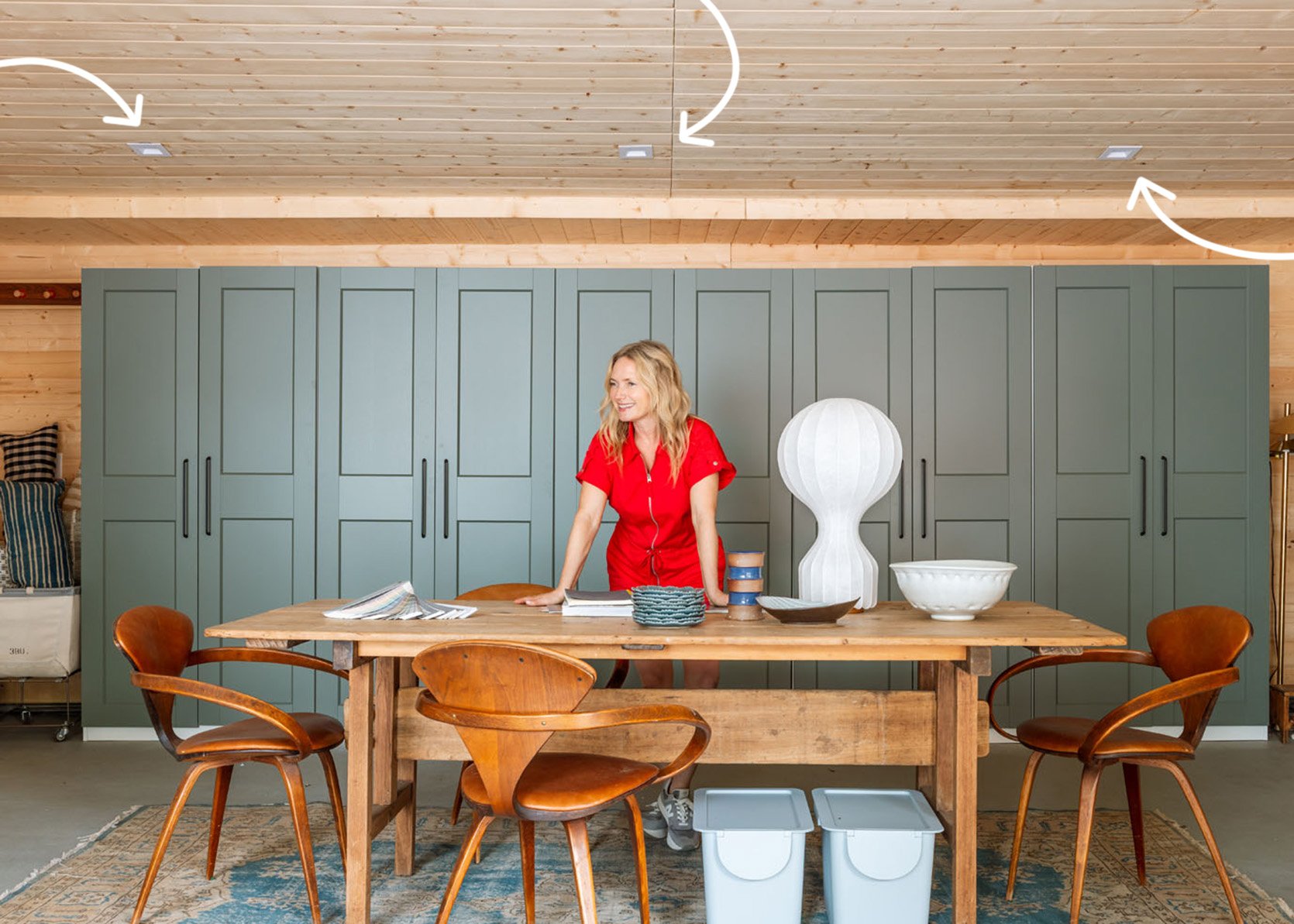
What I Learned: How Many Can Lights Do You Need In A Room (And What Size To Choose??)
Warning: if you are currently renovating or building (congrats), do not just Google info about can lights, or rely on most contractors (no offense). I think we’ve all seen egregious can light crimes (which are almost impossible to change after the fact without serious ceiling and electrical deconstruction). You have one shot to get the placement and amount right, when your ceilings are open, before you finish drywall or, in our case, paneling (no pressure), otherwise back to the construction phase. I have a lot to say about can lights – warnings, learnings, anecdotes, and recommendations. But first…
“Can lights” are a type of “recessed light,” which is the broader category of lights that sit flush in a ceiling – the two words are used pretty interchangeably. Can lights aren’t most designers’ favorite type of lighting because the older ones can be eyesores – they are huge (6+ inches), bulbous (like an eyeball), oddly placed (not in a row, often random), and all those things can scream cheap construction, which is what makes a room look dated fast. And listen, some are cheap (some being much cheaper than others).
My Personal Experience With Can Lights
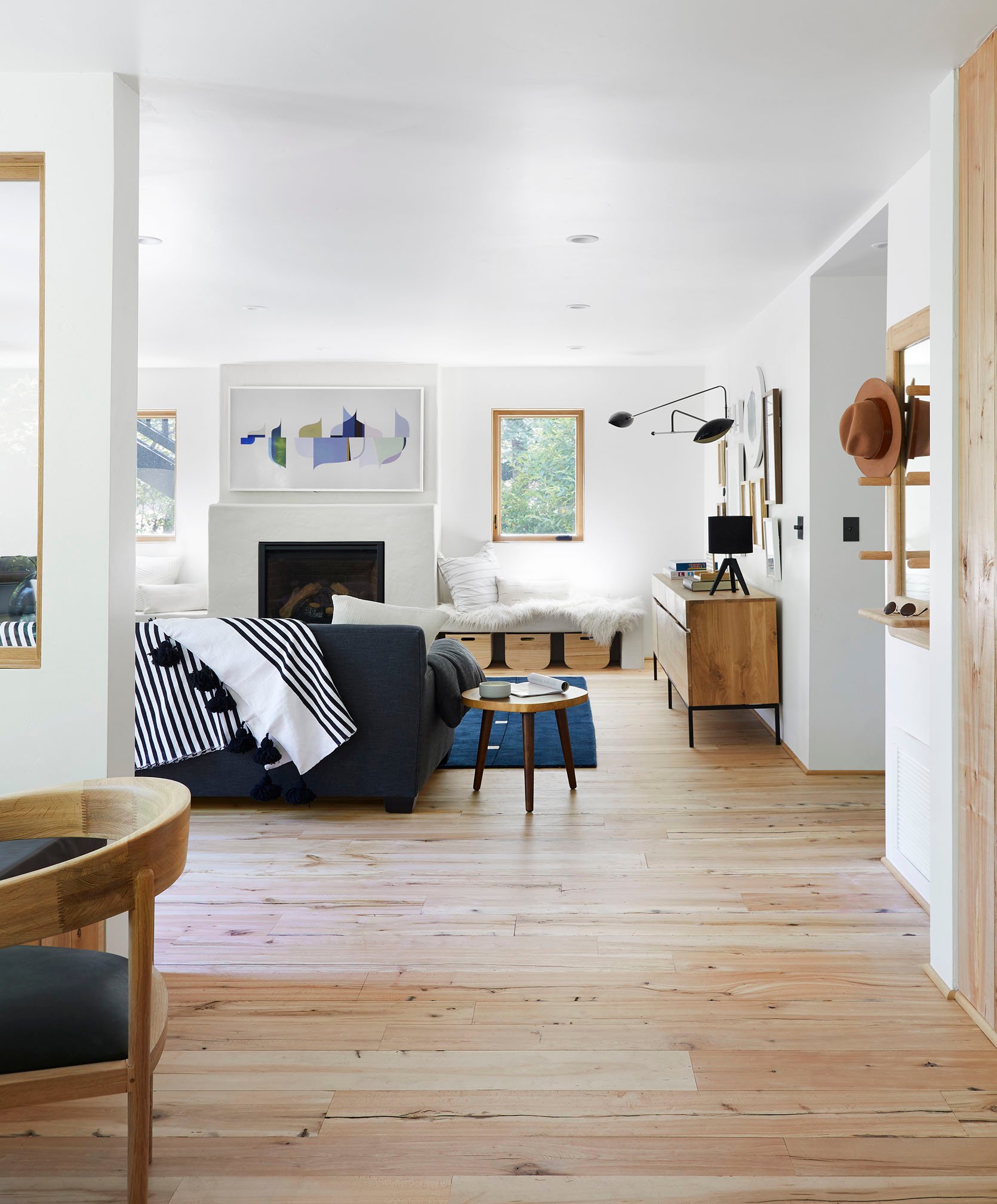
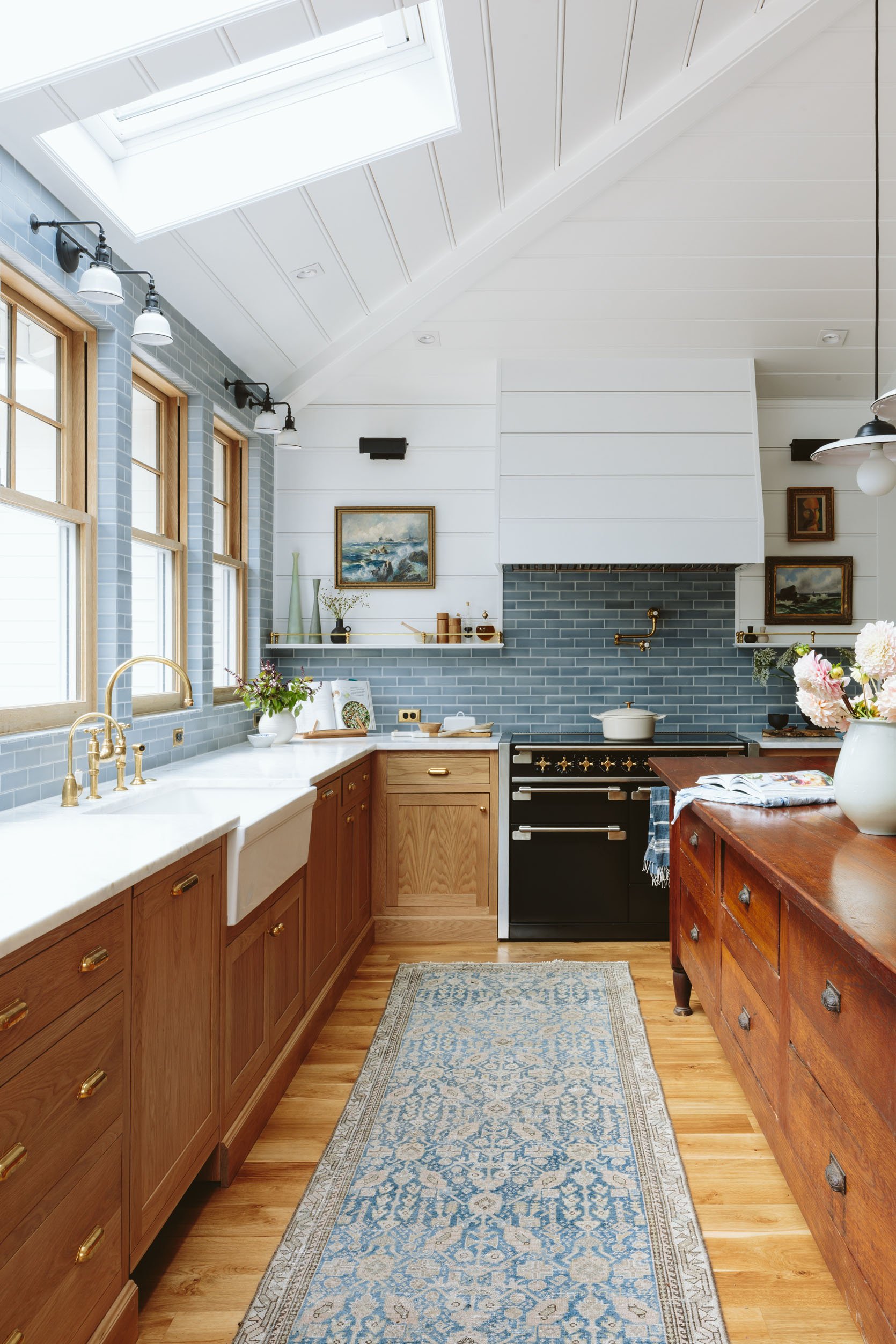
But there are good ones out there, and sometimes they are the best solution to lighting a room. For instance, I don’t mind them in our more minimal mountain house where we used 4″ white round ones that just disappear into the ceiling, minimally placed, and are on a dimmer. The ceilngs are low and I like how streamlined it looks. We also have them in our farmhouse kitchen (4″ square), placed for cooking and cleaning as support to our pendants and sconces (and in the winter we definitely need them).
Below, I started ranting about can lights – all my thoughts I would tell someone in person if they were asking, so I’m putting what appears to be my extreme can-light passion into numbered points here:
- The reason cans can be so good is that the spread of the light is wide and even (generally untrue of a spotlight, in my experience, although track-lights can work, but very style specific). They can really light an entire room evenly, should that be your goal.
- I personally don’t love the 10 flushmount or semi-flushmount look (not to mention that being much more expensive), so if you don’t have a tall enough ceiling for a multi-bulb chandelier, then your options, if you want a lot of light, are what? 10 brass spotlights? Good luck cleaning in the winter!
- For most rooms, I prefer a pretty ceiling fixture (chandelier or a pendant/s), with a couple of wall sconces (when possible) – these are the pretty fixtures. But then I like it when these are supported by some overhead, minimally and evenly placed, small can lights. THERE I SAID IT. I like to see when I want to see!!!
- I don’t love cans in older plaster ceilings.
- What about wood ceilings? Well, in my brother’s house we chose not to interrupt the wood ceiling with black cans (I was team can, BTW) so we did less lighting, choosing some pretty spotlights in their bedroom, and you know what? He wishes he had more lighting in that room and in the kitchen. We fought and lost that battle, and now they have to live with it.
- I prefer small, square housing (4″), and I like black cans on a dark ceiling and white on a light ceiling – see our current family room ceiling. Although a minimal round one is fine, too!
- I mostly choose function but over fashion (barely), and it’s all a personal preference (some rooms I don’t care about as much, functionally, and will choose the better design and skip the can lights).
- Vintage style homes want fewer can lights (they are era-specific, so use where you need, but not everywhere).
- And while I personally have never ever requested photoshopping out can lights in any of our projects, many a photographer has taken liberty to do so on our behalf, which is frustrating because then the rest of us on the internet never know where to place these GD cans!! (You won’t see them in a magazine, ever – admittedly, they can ruin the shot!).
- Be very very careful to place a can light over something unless it’s in line with the others and makes sense with the overall ceiling pattern – i.e., don’t just do a constellation pattern in a kitchen to light the sink. At minimum, keep it symmetrical and balanced (not a random eyeball by the pantry on a diagonal).
See? I have a LOT to say about can lights.
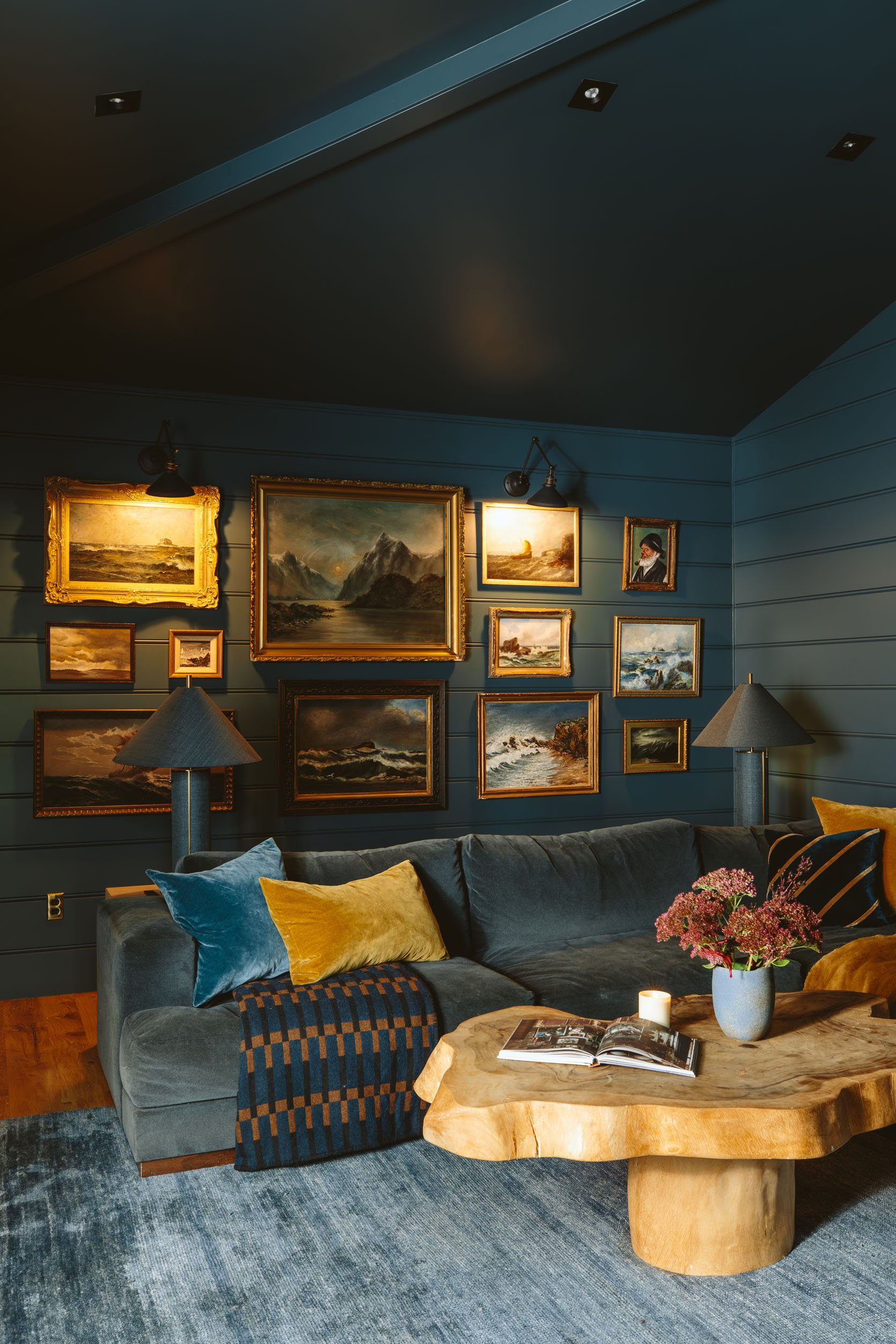
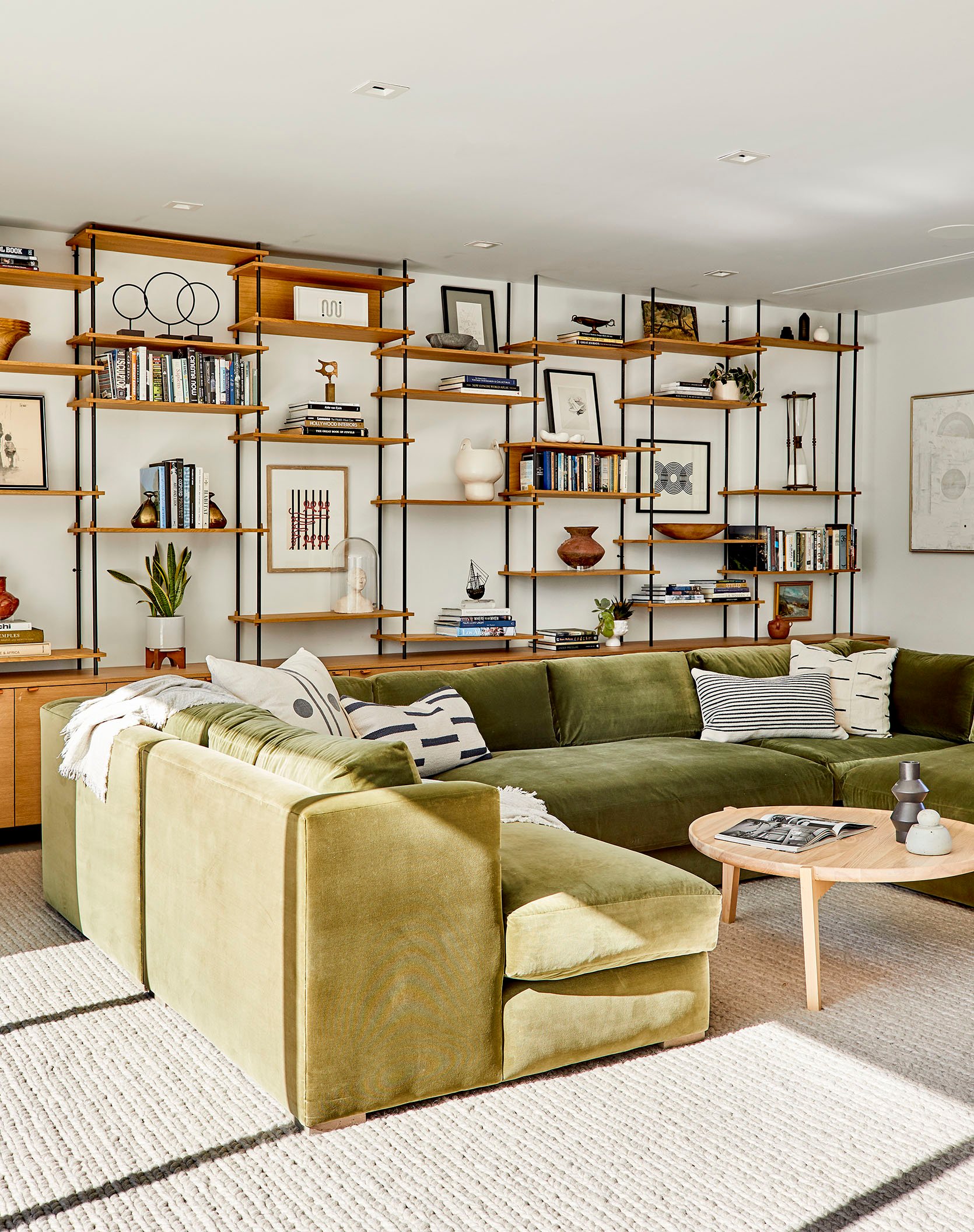
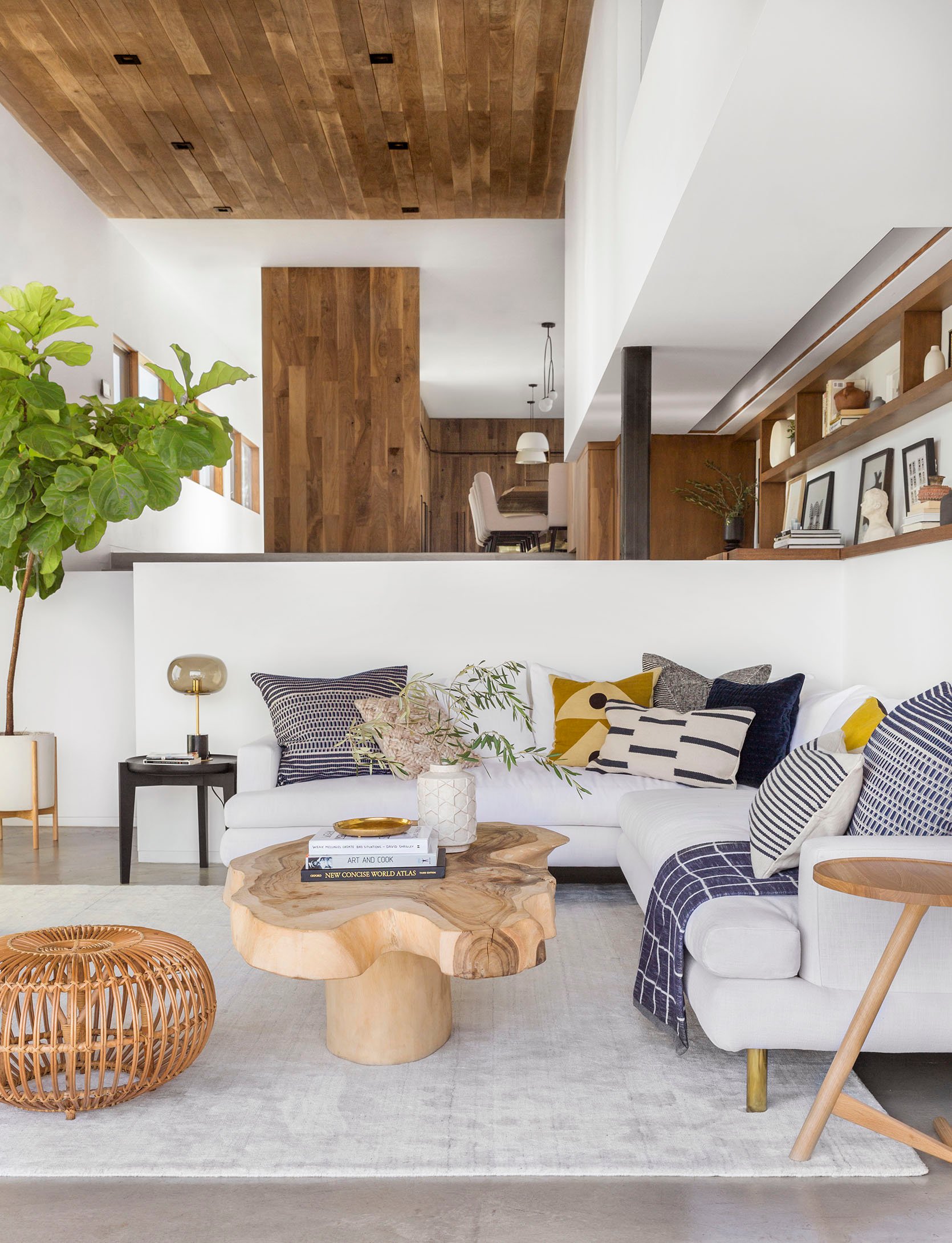
In today’s case, in this garage we need ample lighting in the winter, but we couldn’t have pendants due to the mechanism of the garage doors (pendants would hang down and the door would hit them). And living in an northern state we can’t always just rely on those cute/sweet spotlights that don’t do the job after 4 pm (I’d love to know if anyone has a recommendations for a spotlight that does create enough light – I think it’s a designer conspiracy theory to get us all to use them, but I have it on good record that they don’t create enough actual light to live!).
OMG I’VE GOT TO GET TO THE POINT. That’s all to say I had to figure out on my own (oof) how many can lights for our studio garage, how far apart they should be, how big they should be, and what wattage/lumens they should be (without anyone to help me). NO THANK YOU, SIR. In this space, can lights were the only real option that made sense – so what do I do????
Decision One: How Many Can Lights For This Room?
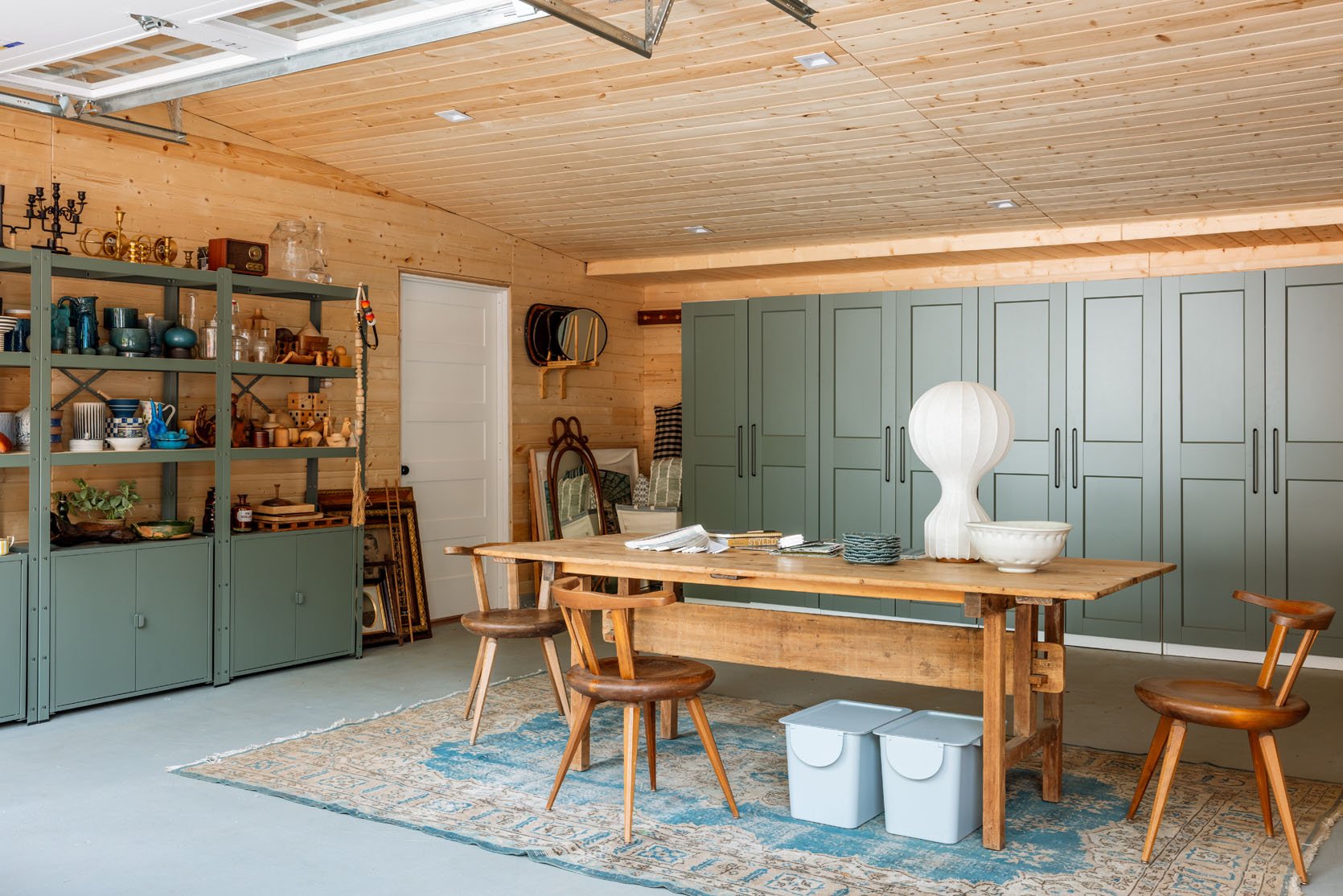
If you Google “how many can lights for a room that is 22×21” (our size), it says, “16 – 24 CAN LIGHTS”. LOLOL. That’s disgusting. Not only would this look so dumb, it would be so bright it would be annoying to live in (true story – my brother’s garage is over-lit and it’s annoyingly bright in there). I’m not performing surgery, folks! Of course, this depends on your lumens and personal preferences (perhaps you are a garage surgeon?)
For this room (22’x21′), my brother and Nick recommended between 9-12, but even 12 felt like a lot. I ended up choosing 9 lights, evenly spaced 6′ apart (technically 6′ left to right, 7′ front to back since it wasn’t a perfect square). This also might have to do with your ceiling framing and where your beams are (they need to attach to the beams).
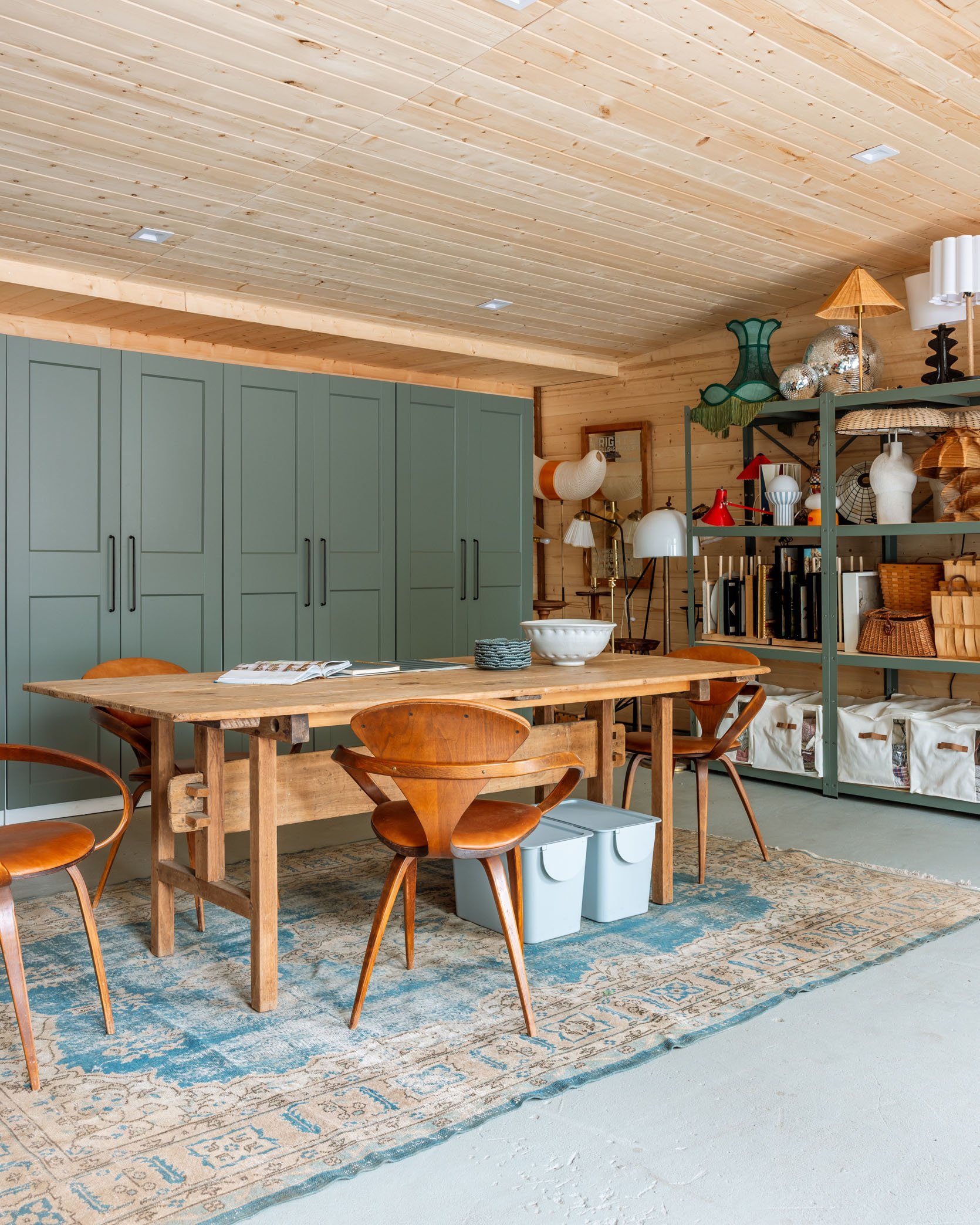
I chose these, which are 4″ white square cans. We are VERY VERY happy with them. Now a few things you should know.
4″ isn’t really accurate – the light source is 2.2″ and the overall visible width is 5″. Additionally, these are for a specific type of rough-in that your electrician would need to do (so check with them to make sure that these are compatible). Regardless of the rough-ins, what I like about these is the following, in case you want to find them compatible with your kit:
- 4″ Inch Square LED Recessed Can Lights
- 14W=75W (adjustable/dimmable)
- 5 Color Options 2700K-5000K (2700 is my usual, but 3k in a garage is good – you can always adjust after).
- 950 Lumens (I don’t really get this, but this is what ours are and I like them)
How Far Apart Should They Be?
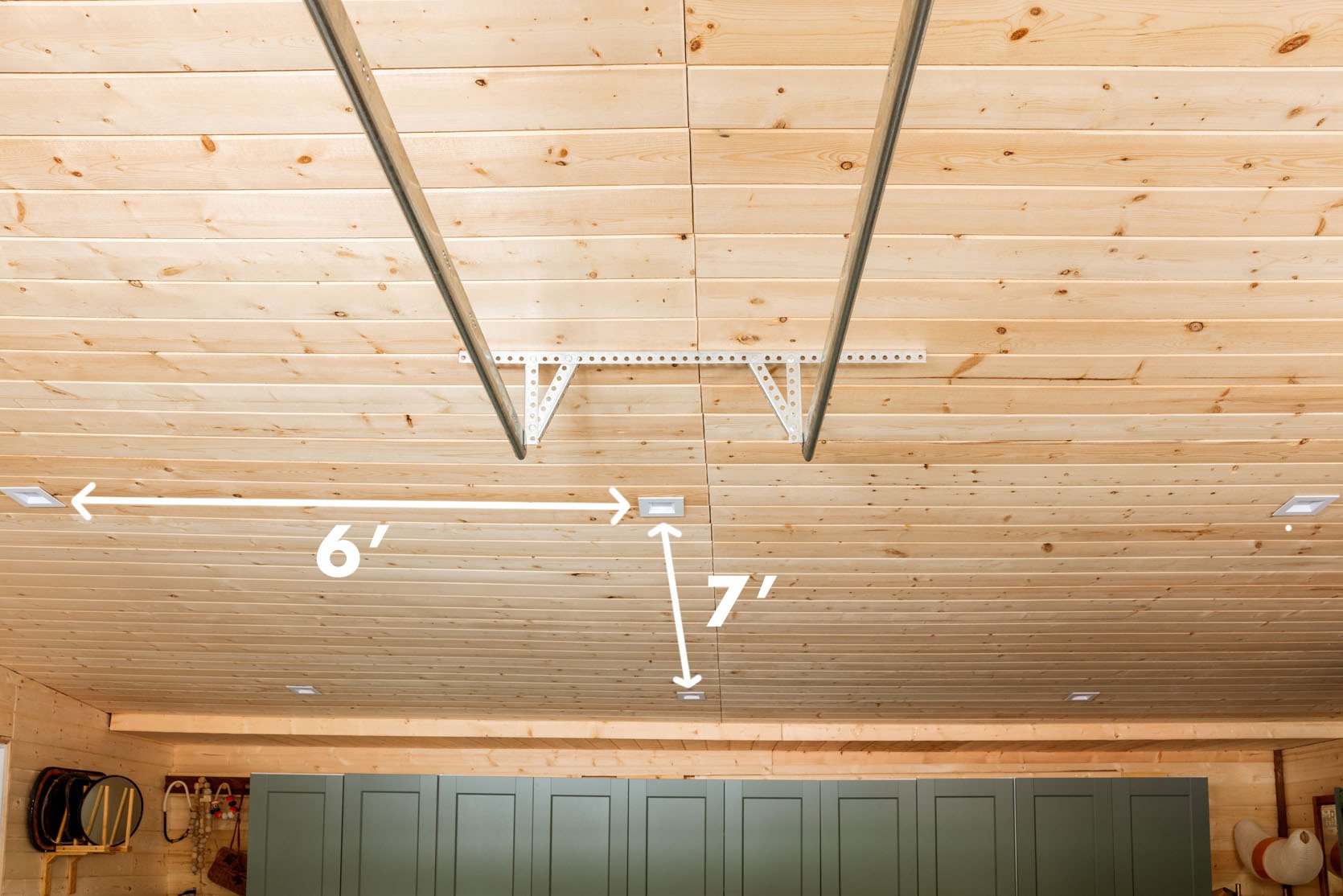
Listen, if there are any lighting experts here, please weigh in as I think it’s a formula based on the height of the ceiling, the width of the room, and lumens/wattage. But most importantly, it’s a personal preference which no formula can tell you! We placed our 6′ apart (on center), left to right, and 7′ front to back (consistent with the shape of the room).

At night (which would be before 8 am or after 4 pm in the winter,) there is plenty of light to do our job in here, which again, is NOT surgery or any sort of lab work. It’s a lot of even light without being annoying.
But I was nervous that choosing only 9 for the whole room and choosing the smallest 4″ cans (which is very small). Would this be a mistake? So I did an experiment – in the other garage, that is purely storage, I decided to amp it up, see if more would be too much or better.
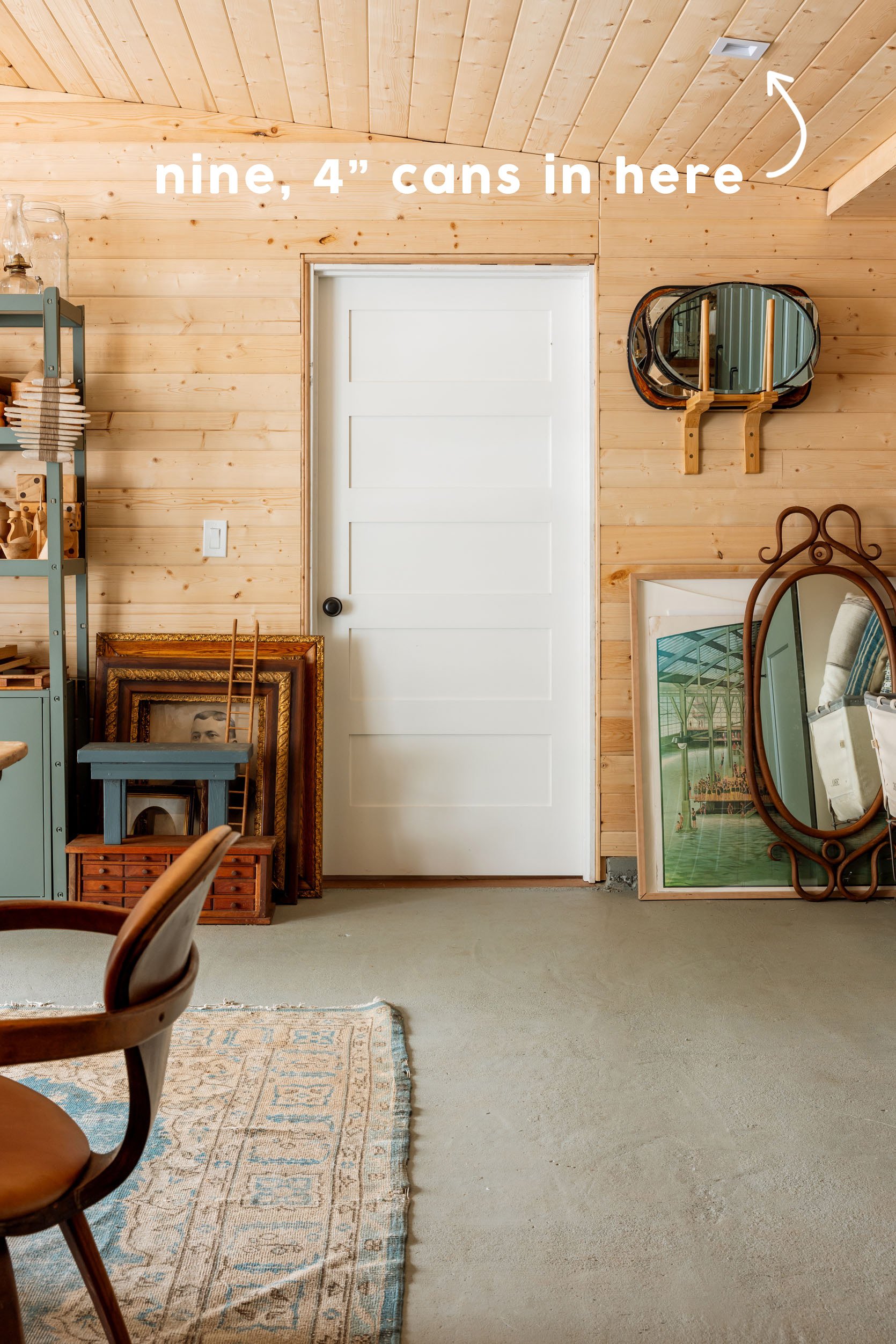
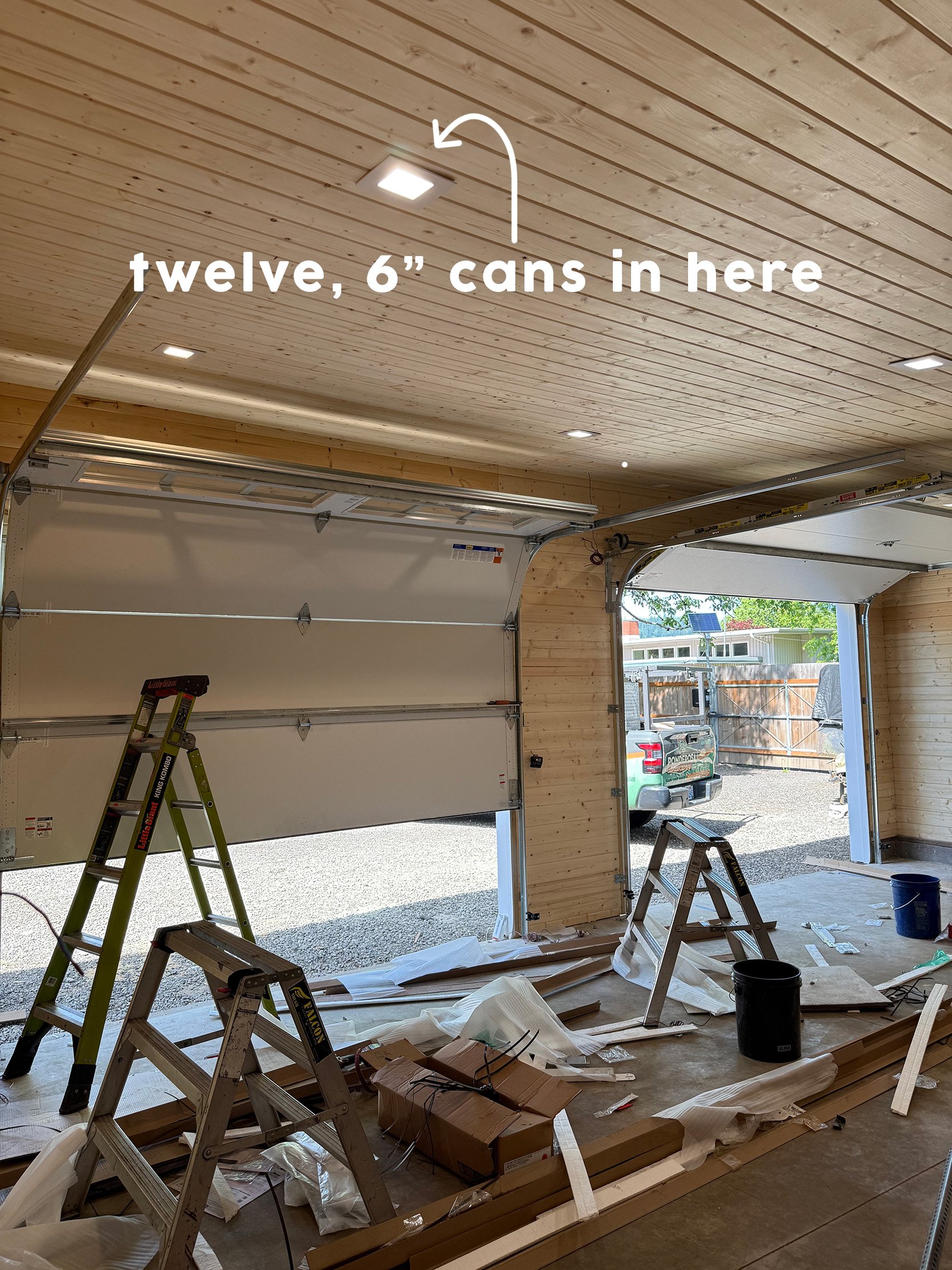
Now we haven’t shot this yet (it’s done but full of stuff you can’t see yet), but this is what the other garage looked like after they installed them. I had to make the decisions at the same time for both garages. This garage is bigger, 25×21, so just in case I was wrong about the first garage, we installed 12 cans in here, of the bigger 6″ size (same specs). We chose these, which were the same, just 2″ bigger and a little cheaper.
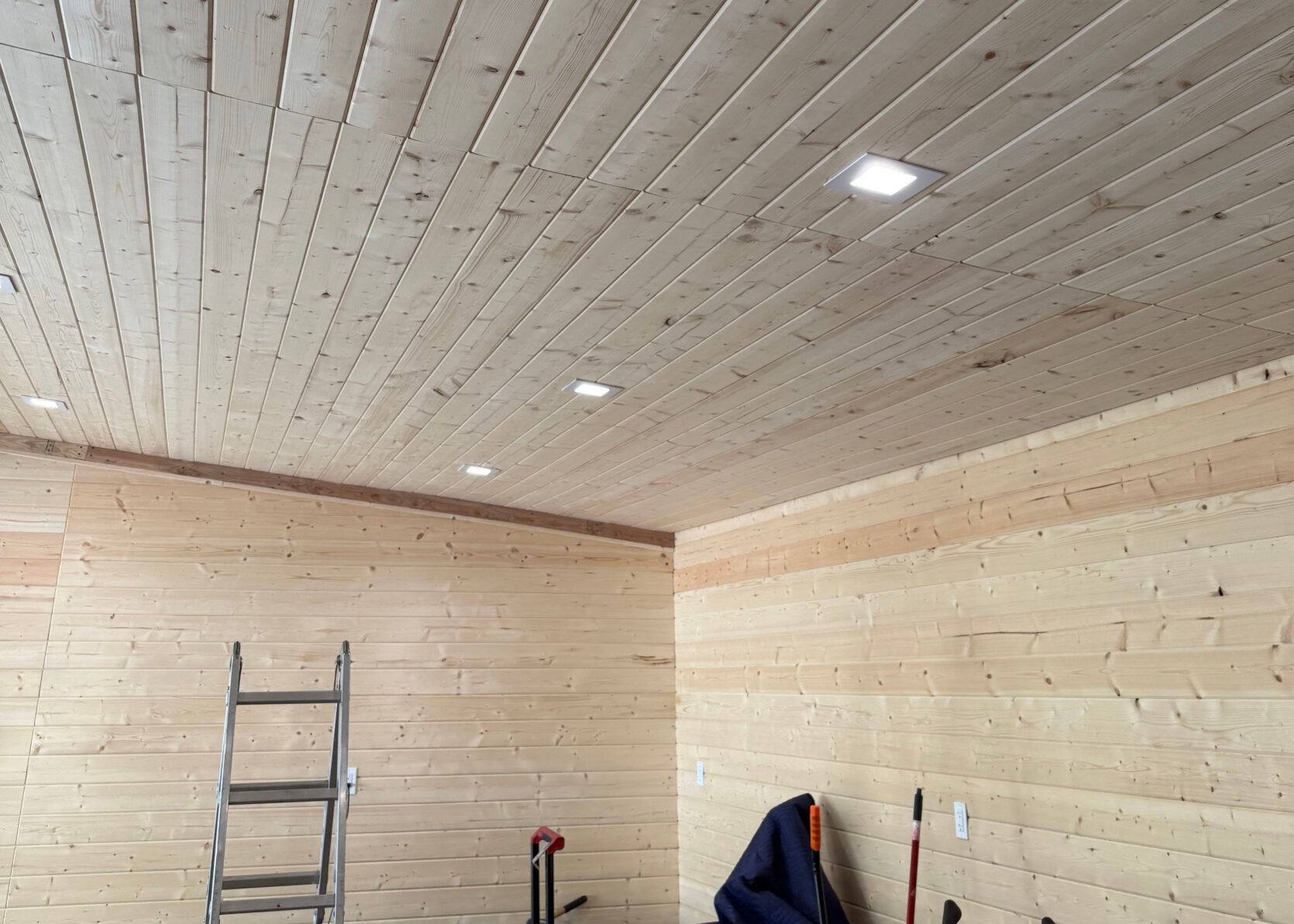
And you know what? The 6″ cans look fine in here! I think that 9 would have not been enough, but the 12 fits great and it is definitely enough light for us. But I guess what I’m saying is that had we done 6″ in our prop studio garage, it would have likely been fine. We also could have probably done 12 in the smaller prop garage without it being annoying, but the 16-24 would have been insane. We are very happy with both, having done far less than “recommended,” which is a great example that your personal preference should always come first (it’s just scary when you don’t want to have regrets later because you can’t see).

I’d love for people with experience to weigh in in the comments to help others trying to make this decision. My main beef with this conversation is that it seems to me that designers don’t want to put them in their clients’ homes, because designers don’t like them, but we never hear from the clients whether they have enough light in the winter. Do any pretty spotlights really give enough ample light? I know that if we didn’t have cans in our bedroom, kitchen, and family room, I would be frustrated a few times a week (not all the time and not in the summer, but definitely in the winter when I want to clean or look for something).
Opening Image Credits: Photo by Kaitlin Green | From: My New Prop Garage Reveal – Including IKEA Shelving (Non-Spon) And A Lot Of Vintage Collections
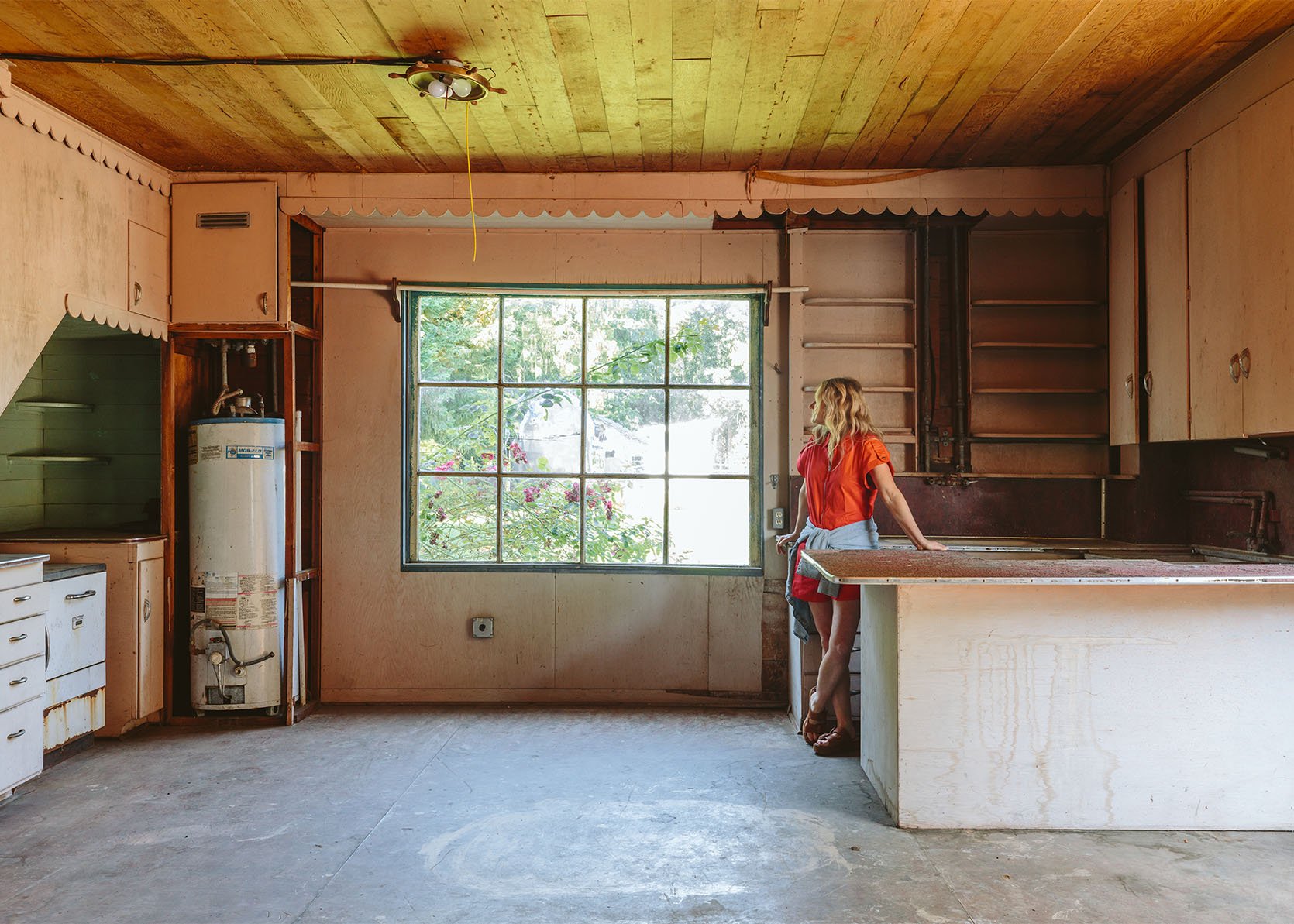
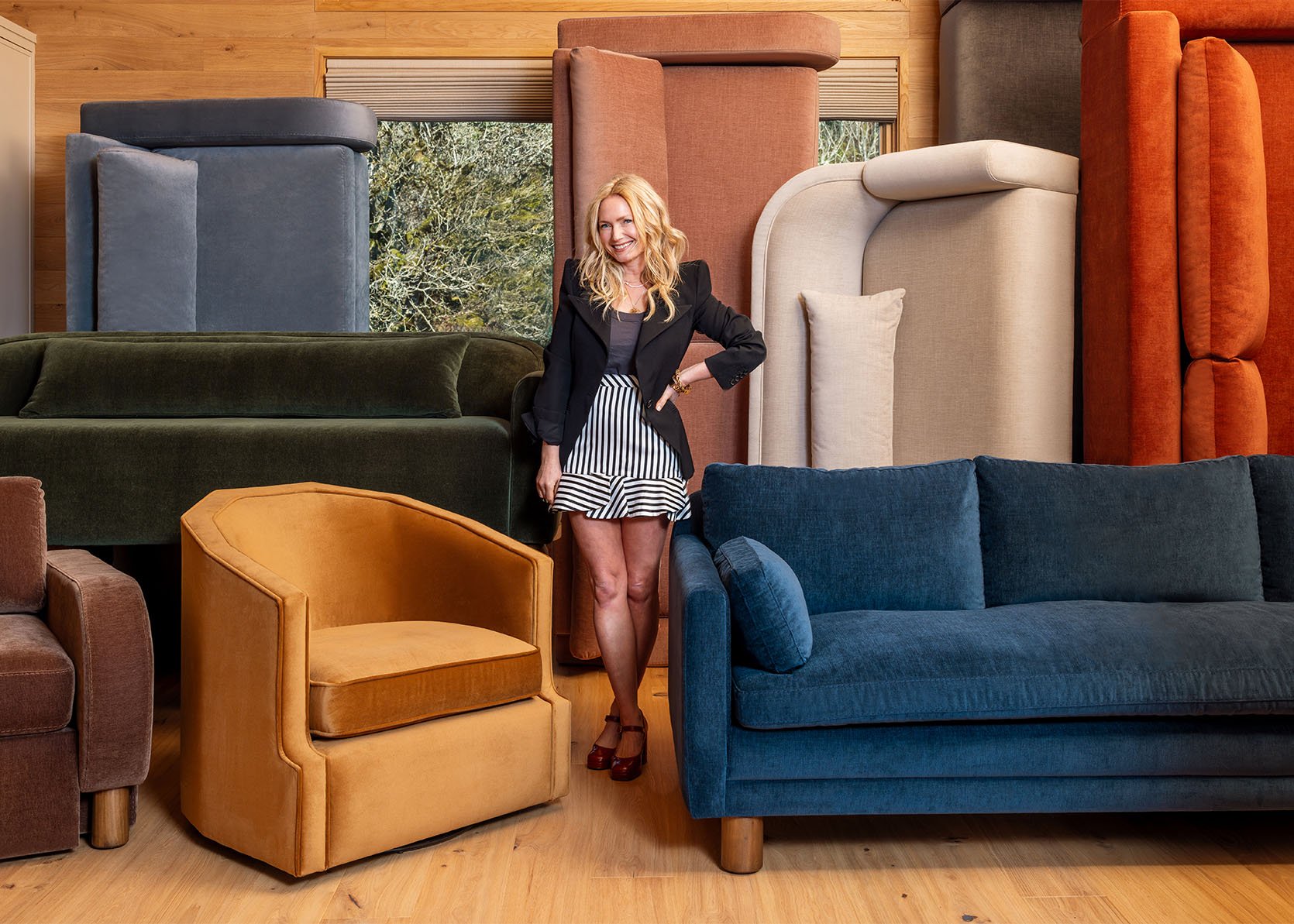

Oh, thank goodness for some sense on this! I had a kitchen with two pretty pendants over the work surfaces and a swagged pendant over the table, and a lamp on the sideboard. It was so dark in winter. It was also painted black. When Covid hit, I had to work in that kitchen and I felt like I was going blind. In my current kitchen, the electrician wanted to put in 6–9 recessed lights plus all my pretty lighting. The internet swore any form of recessed lights were an eyesore. I was determined to be able to see what I was doing when cleaning or crafting or reading at the table. I went for three pretty pendants over the work surfaces and table, a light under the wall cabinet, lights on the extractor, and three recessed lights (which I would call spotlights, by the way) in a row diagonally across the room, tracking the points where there were no good places for pendants/task lights. I put all the lights on when I’m cleaning and I love it, and I leave the spotlights off the rest of the time. You can barely see them. I got the general plan from… Read more »
YES! THIS! we need to see, people. But there are good options out there! and yah I think thats a great mantra ‘if its good enough for Devol its good enough for us’ 🙂
THANK YOU for this post, Emily! Can lights are so era-specific, but there aren’t a lot of other good options for bright and even light, so it feels like such a conundrum. I really appreciate your nuanced take here.
One question I have about the newer can lights is: I’m confused about the lack of a light bulb. I realize that LED lights can last for years, but what’s the plan when the light element eventually fails? replace the whole fixture? That seems expensive and wasteful, but there don’t seem to be a lot of other good options. The majority of LED ceiling lights (can lights and others) seem to just be using built-in light elements and hoping for the best. I’m not a light designer or manufacturer; is there some key piece of information I’m missing?
I fell down an internet rabbit hole about this when renovating our ranch house, trying to decide what to do with its icky large circa 1997 can lights (there are for sure YouTube videos explaining/ranting about this to be found) but basically it is exactly as you described it: they are sticking LEDs into lights and making so you have to replace the whole thing rather than just a bulb. They call them “integrated” but it mostly means the whole fixture is trash if the bulb misfires.
So if one breaks, you have to replace the whole thing. Which, if it’s one of say 26 matching can lights in an open concept space, you are going to have a “wrong” light replacement: even if you buy extras from the beginning, running lights for years means the color/function will change slightly and your replacement will be “off”. This is exacerbated by using dimmers (LEDs can struggle with dimming).
it’s a rip off! Buy sockets with bulbs! Then put whatever LED light bulb you want in there, problem solved! (She yells as she retreats back into her – brightly evenly lit – cave).
Do you have recs on simple sockets with bulbs that you can replace? this integrated situation does seem to be a new problem (makes me want to stock up???) its MADDENING! And no one has the right advice, IMHO.
For our house, we were able to shuffle the existing cans as we added pendants and removed the rows of 6-8 to make more like 4 per room (our house has smaller rooms/mid century low ceilings). Someone with more info than I would have to say whether the industry is conspiring to make every available fixture LED integrated but I’d guess not, so you just have to make sure you don’t accidentally buy/replace cans with integrated fixtures (if you don’t want to) because that is now what is “new” and “selling.” This reminds me of your Speed Queen loyalty: whenever possible, opt for the older products that are meant to be repaired and replaced rather than trashed when it malfunctions. The old school can sockets and “baffles” (which I just like to paint the same color as the walls/ceiling to integrate) are still for sale and less expensive, but not the top selling products placed in stores/online. One clue when searching: “integrated” means no bulb, and technically “can” lights have metal cans (the baffle) with bulbs and all of these new fixtures are “recessed” (not can) lights, also referred to sometimes as “pucks.” But because everyone confuses the terms you… Read more »
Yes, and now you have to double check fans with lights or lamps. A lot of them have nonreplaceable bulbs too. It’s absolute trash … because when the bulb burns out, it has to go into the trash. And we all know when they claim 50000 hours or 5-years life that it never even lasts close to that long. Now we’re gonna replace all of our light fixtures every five years? It’s a horrifying thought … think of the waste.
Often lighting websites allow you to filter by bulb type so I chose recessed plaster stair lights that take G9 bulbs. I’m glad I did because the bulbs they came with were about 300 lumens each and blinding. I replaced them with 100 lumen 2700K bulbs and they are perfect.
I also chose spotlights that take GU10 bulbs for art lighting so that I can choose exactly what CRI, beam angle, colour temp and lumen strength I want. I would do exactly the same if I was choosing recessed cans. It gives you more flexibility for function now and you don’t have to throw out a whole fixture, or multiples if they are all in the same sight line, if one fails.
Honestly, I felt like I had studied enough for another uni degree by the time I had finished down the lighting design rabbit hole. There is a gaping hole in the internet for clear, common sense information about lighting design, and what there is is largely specific to more modern style houses.
Mint Lighting Design in Australia provides about the best series of blog posts and insta reels on the subject that I came across.
Thanks for all of the info, I don’t need it now but will keep this for future reference. My daughter lives in Portland and it’s been HOT this summer, is the garage heated/air conditioned? I’m not sure how much you could work out there without HVAC?
its north facing with no direct light – so far even on 85 degree days its very comfortable, but i agree on the rare 100 degrees it might be too hot. i’ll let you know!
I wish so much I hadn’t used any cans in my living room — I NEVER use them and generally have the ceiling fixture lights on dim. Even in my kitchen I wish I had mixed the can lights in favor of just using a kitchen table pendant, island pendants and under cabinet lighting for the prep space.
I yearn for the olden days when the entire kitchen ceiling was lit up with fluorescent light bulbs. They were bright enough without being harsh. Now my brain gets completely battle-ready when overhead lighting is on in my kitchen. It triggers a bad mood immediately.
Wow, agree to disagree on fluorescents not being harsh! haha. The color temperature on those is usually around 5000K and super cold/harsh light. No desire to go back to that place!
This is such a hot take! I’ve never heard anyone yearn for fluorescent lights!
Sounds like your current kitchen lights must be way too bright… Can you change the switch to a dimmer, maybe?
100% Team Being-able-to-see.
I’m one of those who strongly dislikes overhead lights and uses lots of lamps but there are just times when you need to be able to see and you need the extra overhead lights.
Not really a big debate in Australia – can lights or, as we call them, ceiling lights, are ubiquitous and very popular!!
And very useful article by the way!! Thank you!🙏
I have those old awful can floodlights in my kitchen, mercifully on a dimmer, but they are wired very strangely, and when I eventually get around to redoing the kitchen, something else is going to have to happen there. I will probably replace the 8 current cans with the 4″ slimline LED dimmable ones that I have in the living room. They are non-obtrusive, and I can actually see when I need to. My living room is north facing and very dark, and it was so frustrating to try and see before those lights were installed. So happy that I did it.
Thank you! I wish you had published this 6 months ago, when I was renovating so that I would have known about the smaller ones, but regardless- thank you for defending can lights! I have low ceilings (<8 ft) and also live in the PNW and these are literally my only option!
Yes to this! It’s easy for designers to rant about can lights when they are designing expansive, light-filled homes but many of us live in small, light-starved dwellings. We’re doing our best, and can lights are useful tool.
quick question: Em, when you say “spotlight” are you referring to the pretty brass ceiling fixtures Heidi Caillier uses in place of the kind of can lights you’re referring to here..?
general comment: Somewhere on the internet (possibly here? maybe an instagram comment?) I have shared my own rant describing in depth my feelings on this subject but as it was panic-inducing I won’t repeat it now. I don’t know the name of it but I have the condition that goes if-I-can’t-see-properly-I-can’t think-and-OhMyGod-someone-please-turn-on-a-light! so I deeply understand the need to be able to see properly. That being said, even an image of a room full of can lights instead of other lighting options can leave me flirting with the aforementioned panic attack (gosh, I sound so dramatic! unfortunately, due to health issues, my personal biome is often this fragile). In conclusion (finally!), I believe in using can lights judiciously, in task-specific locations but always in support of a lighting plan with lots of layered and gentler sources of light.
PS. Wait, why aren’t there any can light options in faux wood grain -and in multiple shades so they would disappear into a wide variety of wood ceilings …!?
I have seen wood trim in magazines, but I have no idea where the average Jolene can buy these.
Can lights are such a guessing game! White shaded lights send soft light in all directions, whether flush, semi flush, chandelier…easy.
I have researched cans for kitchen lighting and most you tube videos which go into details say they throw a 4′ wide cone of light at counter height, so space them about 4′ apart for even light… but still check the specifications on the specific ones you choose. I wonder how shadowy the spaces in between would even be if you spaced them further apart? Do you, Emily, notice shadows on the work surface in your garage with 6-7 feet between them? More on kitchen placement: don’t light your aisles (ie don’t center the cans over aisles) but light your counters, placing them at or just inside the countertop edge.
I have sensitive, picky eyes and I’ve noticed the flat wafer type “cans” give MUCH more glare than actual recessed cylinder cans of the old fashioned type that take bulbs, to the point that I won’t use wafer style lights in my home.
The first thing to consider is a pleasing, equal pattern of where the lights are. They all must be equidistant from each other, anything else will look like a mistake. How big is your room? Injave 16 cans in a 32’x24’ room (but it’s a cathedral ceiling 15’ high).
Should say “I have” not Injave
I have the full suite of lighting in my kitchen: undercabinet lights, recessed cans, multiple flushmounts, decorative sconces. Guess what we turn on 95% of the time? The cans! The flushmounts are pretty and give off a nice glow but it still feels like “night time” when I turn them on in full darkness, and I hate the feeling of dim rooms when I’m actually trying to do something.
It’s not a hill I’m going to die on, but there are few instances where I like can lights – ultra-modern ones and utilitarian ones (like Emily’s garage). I just think that there are usually much better ways to light a space. And I’m not a vampire who prefers the dark – my husband is one of those, and it makes me crazy. My recently renovated kitchen has more than enough lighting, and it has 7 1/2 foot ceilings (colonial-era), so it’s not as if there is a ton of room for pendants, and it’s not in sunny California. I just made sure every single section of counter was lit with a sconce, under counter light or lamp, and the same was true for kitchen/work table. I think Jean Stoffer uses fixtures well and they don’t cover the ceiling as much as Heidi Caillier’s do. My biggest beef with cans is that you can tell EXACTLY when they were installed, because the technology changes so quickly. And then it’s hard to repair or replace them without conducting major surgery on your ceiling (related to the integrated LED discussion earlier). I also think recessed light casts unflattering shadows on people’s faces,… Read more »
By the way, lighting designers are amazing! Highly recommend. Their skill set is really unique, kind of like kitchen designers. They can help make sure your fixtures are bright enough and in the right place. I think a lot of times when people think the solution to their too dark rooms is canned lights, they just don’t have the RIGHT fixtures.
So how do you feel about ceiling fans? LOL! I actually love my can lights in the kitchen, just like I love my integrated ceiling fan/chandelier in the bedroom. Its my house and I am decorating and designing it for me. Plus…. if it is good for deVOL….
I have can lights in my house and I have not turned them on a single time in 5 years. I wish I could get rid of them easily.
Team can-lights-in-the-right-locations for life! All those little bulbs/spots hanging down all over the ceiling are WAAAY more painful to my eyes than lights that mostly disappear. Thank you for this post confirming my belief that recessed lights are good when used appropriately!
I’ve designed my share of good (in my opinion anyway) lighting plans that were simply dreamy to live in which included cans. But I’ve also lived in some nightmares…… a circa-1988 house where every. single. light. in the entire house was a can. What a nightmare! And they were these weird one-piece things that were difficult to convert to pendants. I managed to swap one before I moved out.
My current home is a vintage house previously owned by an electrician. A lighting artist he was not, and he made sure to add cans to every room on the first floor. Ugh. They’re in all the wrong places and some of them are ginormous things from the late 70s. I’m doing what I can to mitigate the pain they cause my eyes, but still….on the darkest of days when you need to see they are lifesavers.
I’m on team Leave My Cans Alone and my husband is on the opposing I Love Me a Pendant team. He keeps pestering to replace (at great hassle, as noted in a previous comment) our cans over the bar with pendants, which so often seem to be too high (Interrogation illumination) or too low (Help, I Can’t Reach the Snacks illumination). His only hope is that I die first so he can install his pendants.
I live in a long skinny rowhouse, and generally have the same preference of being can-wary. We skipped cans in the small kitchen (lots of natural light, plus under-counter lighting and one integrated fan/light) and very small living room (also lots of natural light, plus 3 layered fixtures). We used 4 small 4″ round cans in the middle dining room, which has minimal light and one table fixture. Bonus, fewer sets of lights keeps the light switches simpler.
On the 2nd floor: no cans in bedrooms generally, yes cans in closets (even small reach-in one, such a game changer) and shower. I thought I wanted flush mounts for the hallway but I tired of making decisions so just went with 2 cans, and it’s been nice keeping the focus on looking through the hallways into the more interesting bedrooms.
Overall I like cans for interior spaces with minimal natural light, especially nooks and crannies like closets and basement landings, having them on a dimmer, and installing slightly fewer than general guidelines.
Thank you for taking this approach! I love canned lights. They mostly disappear and provide much needed, even light. We do have annoyingly placed ones in our kitchen (inherited) where there are two aligned over the sink area, then four in a semi-circle over the island. But I’d still rather have them than not. And, I personally hate the small flush mounts instead trend – it looks like the ceiling has pimples.
I really enjoyed reviewing perspective of this this conversation. Coming from a background of extensively utilizing can lights (more appropriately called recessed lights) into remodeling and new construction projects, it is fascinating to hear the thoughts and experience of individuals trying to navigate this immense and terribly marketed product category. What is missing here is the real technical aspect of can lights that make the actual difference in all of this, that is, when purposely implemented . The analogy at hand is painting. This conversation has lot do with aesthetics, or final look of the crafted space–finished canvas, but very little do with details of the tools–cans (brushes and paint), to get to the final results. These can lights are like brushes that paint light into the space. As an artist needs to understand which size and type of brush to use, and with which paint type and color, as well as the technique to apply the paint to the media; so the same is true with can lights applying light into a room. As a lighting designer we take the technical aspects of the product (cans) and apply the light, intentionally and artistically, to the space to have it… Read more »
I love this discussion! I’m typically team vampire (lowest lights possible at night) BUT, also, I need to see in my kitchen! Cans are great for a work space but totally unnecessary in other living spaces, IMO.
In our kitchen, we splurged on extremely low profile cans that show almost zero rim. We also made the controversial (lol) decision to put them strategically above work areas, which means they’re not in a straight line. Not one single person has noticed they’re not in a row and the light is perfect when you’re actually cooking. (We also have great antique brass schoolhouse style pendants, which I think help distract the eye from the unaligned cans).
Surely one of the professional associations related to architecture, interior design, or lighting has established standards that can be referenced. It strikes me as the type of thing that would be queried on their certification exams.